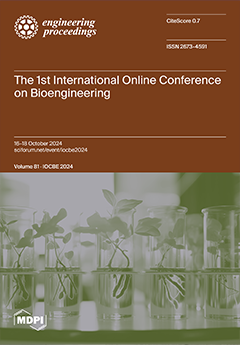Food contamination with
Listeria monocytogenes can cause health problems of increasing global concern. The resistance of
L. monocytogenes to antibiotics requires finding alternative solutions to protect human health. This mini study was designed to evaluate the effects of antibiotics and some particular essential
[...] Read more.
Food contamination with
Listeria monocytogenes can cause health problems of increasing global concern. The resistance of
L. monocytogenes to antibiotics requires finding alternative solutions to protect human health. This mini study was designed to evaluate the effects of antibiotics and some particular essential oils on
L. monocytogenes isolates from food of animal origin and isolates from food-producing surfaces. This aim was to investigate the effects of seven antibiotics (amikacin, gentamicin, penicillin, cephalexin, ceftriaxone, tetracycline, and nalidixic acid) on
L. monocytogenes isolated from food and surface samples. Also, the antibacterial activity of four essential oils (thyme, oregano, peppermint, and rosemary) against the growth of
L. monocytogenes isolates was investigated.
Listeria monocytogenes isolates were from food of an animal origin and food-producing surfaces. The isolation and determination of
L. monocytogenes from food samples followed ISO 11290-1. Surface samplings were performed in compliance with ISO 18593, followed by the isolation and determination of
L. monocytogenes. A disc diffusion method was used, and the tests were performed in triplicate. The results of this study confirmed the pronounced antibacterial activity of essential oils compared to antimicrobial drugs. The essential oil of
Thymus vulgaris showed a bactericidal effect against all tested
L. monocytogenes isolates.
Full article




